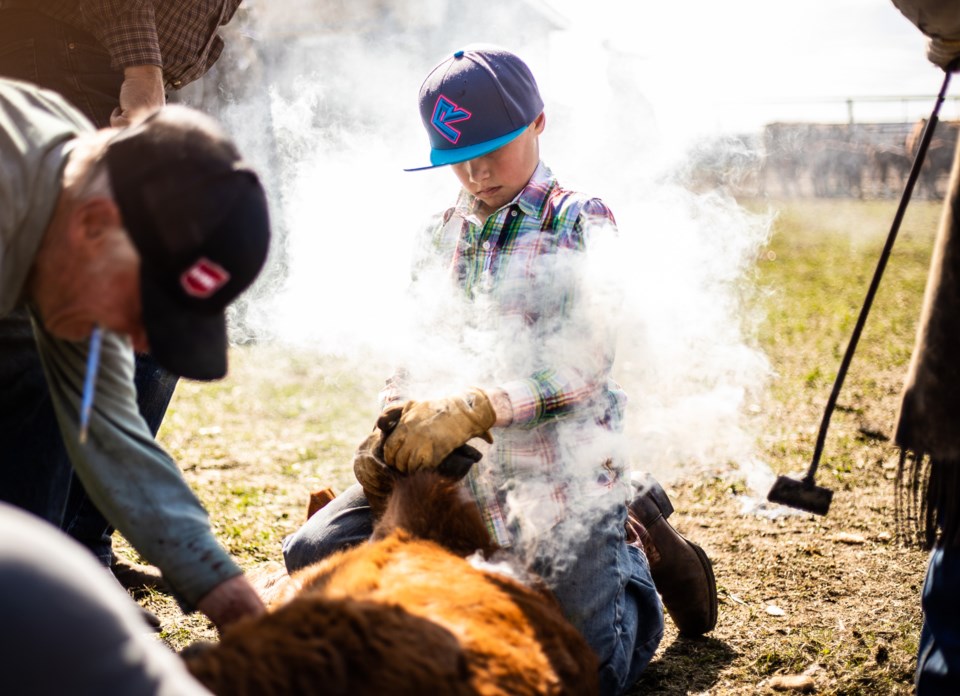Each year, after the herds of the Foothills finish calving, comes branding time.
Before cattle can be driven out to the forestry reserves in June where they will graze for the summer, Alberta’s ranchers must brand the new calves for identification, inoculate them, and in the case of most males, castrate them.
The immense task of sorting and working through the herd is a tradition in Alberta’s historic ranching culture going back generations.
With some help from friends and neighbours, third-generation ranchers and brothers John, Gary, and Bill Thomson were able to get their herds branded.
“She’d be a long day if it was only four or five of us,” John Thomson said, adding the team was able to work safely to carry out the essential part of the cattle production.
The process is simple neighbourly spirit, he added.
“People show up to help, then we go around to their places and help them—it lightens the load on all of us.”
As the process starts, everyone knows their role.
A group of ropers bringing the calves in, where a team reminiscent of a Formula One pit crew each performs their part in succession.
The hot metal brand is applied to identify the ranch—the only reliable method to identify cattle that are released at large into the forestry—and if there are horns, another hot metal piece is used to dehorn them.
Most cattle are dehorned because beef producers don’t want to deal with them, Thomson explained, and the cattle will often injure each other fighting.
The next person waits in the wings to apply an ointment to the branding site.
From there a handful of people take turns administering various medications and vaccines to inoculate against various ailments that can afflict cattle.
For most males, this also entails castration.
The whole process is done quickly, usually taking less than a minute.
While cattle are also now given an electronic ear tag similar to a clothing store security tag, the brands remain the only permanent way to veritably identify and sort cattle during the roundup from the forestry in October or in case of theft.
A 2019 study by Oregon State University suggested stress endured by calves during the process could be attributed more to the temporary separation from their mothers, as cortisol levels (a stress hormone) post-branding was much higher in calves separated than in calves who were not.
Immediately after branding, however, the calves are let out of the pen to return to their herd.
Hands-on learning is part of passing on the way of life to new generations.
Children on the ranch like Thomson’s 11-year-old grandson Hayes take part in the work.
“They have to learn, they’re going to have to take over some day,” Thomson said.
“Once they get bigger, some of the workload’s going to fall onto them. It’s training”
Thomson added he’s concerned for his herd come June, when he drives his cattle up Highway 546 into Sheep River Wildland Provincial Park to a grazing lease.
Speeding motorists have always been a concern, but the record numbers of Albertans visiting the parks poses a greater threat, he said.
He hopes people keep the safety of his cattle in mind driving the narrow highways into the parks.
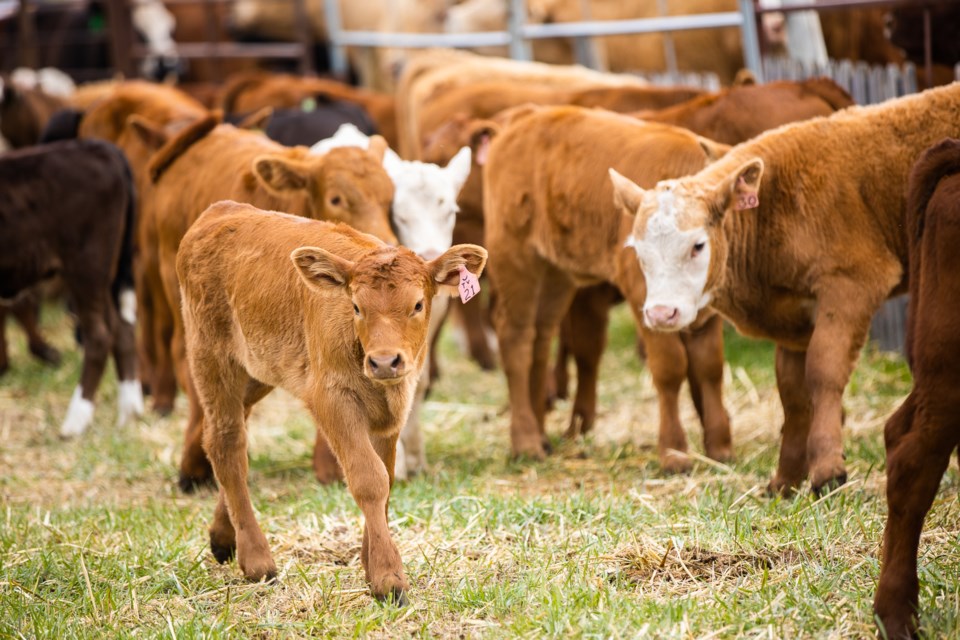 Calves wait during a cattle branding near Black Diamond on May 22. By Brent Calver/OkotoksTODAY
Calves wait during a cattle branding near Black Diamond on May 22. By Brent Calver/OkotoksTODAY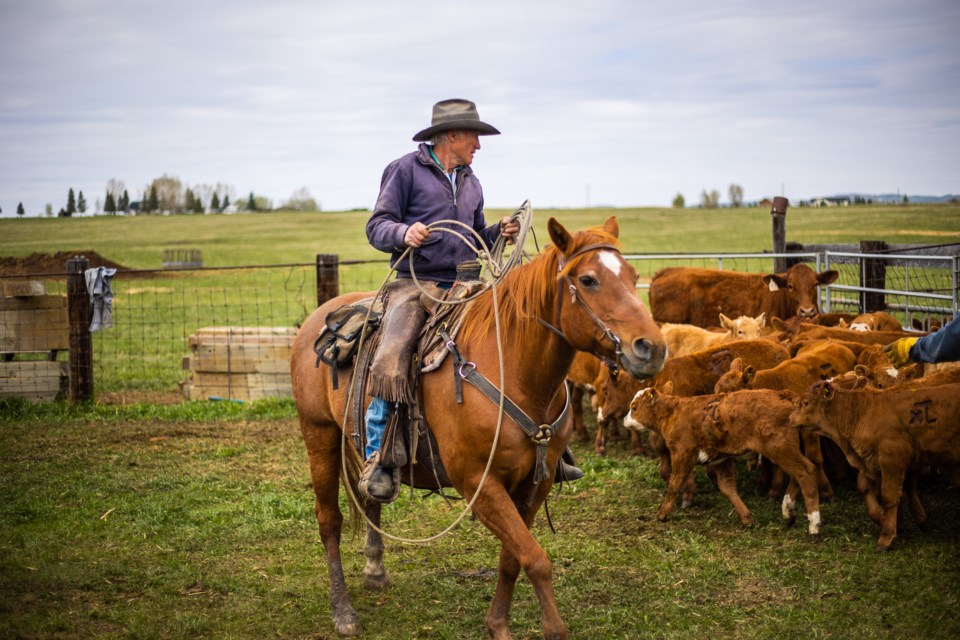 Gary Thomson ropes calves during a cattle branding for his and brothers Bill and John Thomson's herds near Black Diamond on May 22. By Brent Calver/OkotoksTODAY
Gary Thomson ropes calves during a cattle branding for his and brothers Bill and John Thomson's herds near Black Diamond on May 22. By Brent Calver/OkotoksTODAY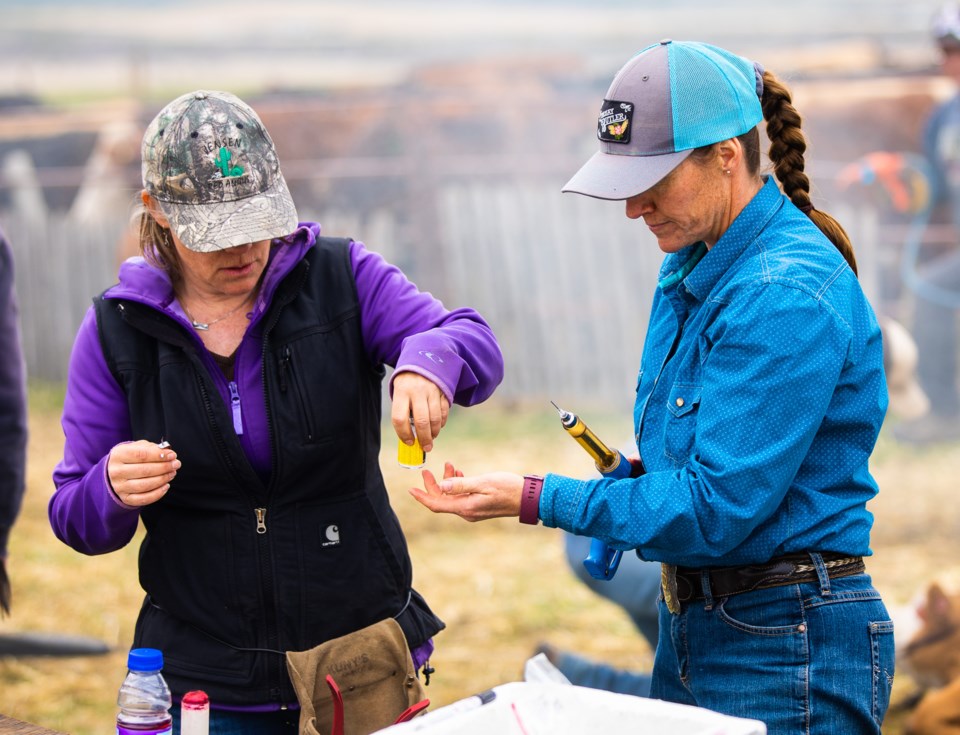 Vicky Morrison, left, and Keri Hodson prepare medicines during a cattle branding near Black Diamond on May 22. By Brent Calver/OkotoksTODAY
Vicky Morrison, left, and Keri Hodson prepare medicines during a cattle branding near Black Diamond on May 22. By Brent Calver/OkotoksTODAY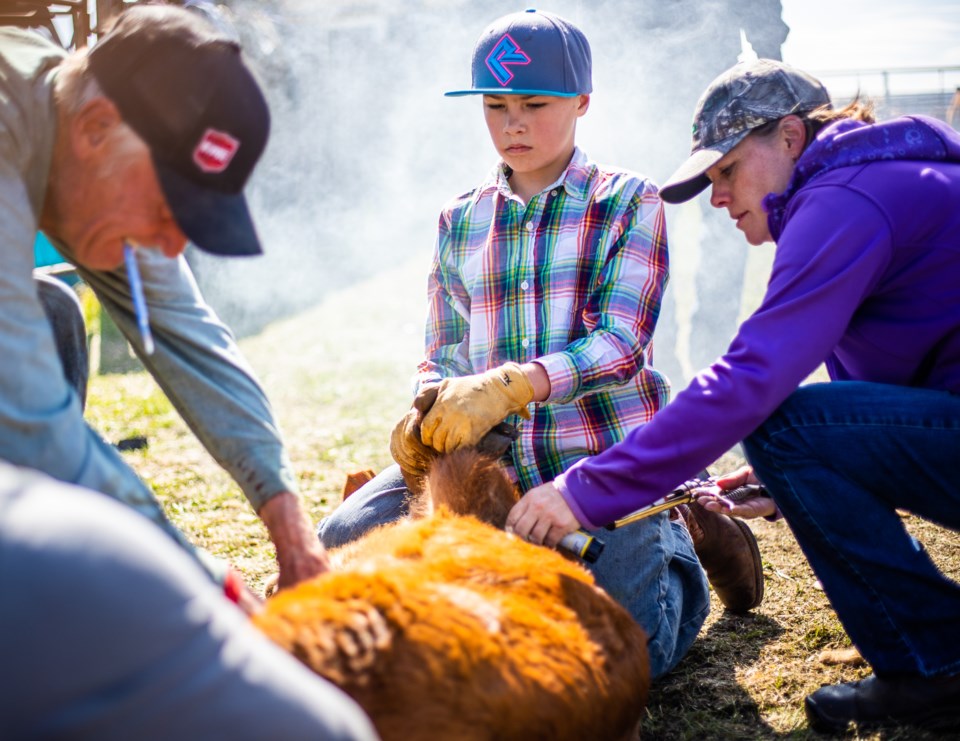 Willy Campbell, left, castrates a calf held by Hayes Thomson while Vicky Morrison administers an inoculation during a cattle branding on May 22. In all aspects of ranching, the children take part in the work to learn their parents' skills. By Brent Calver/OkotoksTODAY
Willy Campbell, left, castrates a calf held by Hayes Thomson while Vicky Morrison administers an inoculation during a cattle branding on May 22. In all aspects of ranching, the children take part in the work to learn their parents' skills. By Brent Calver/OkotoksTODAY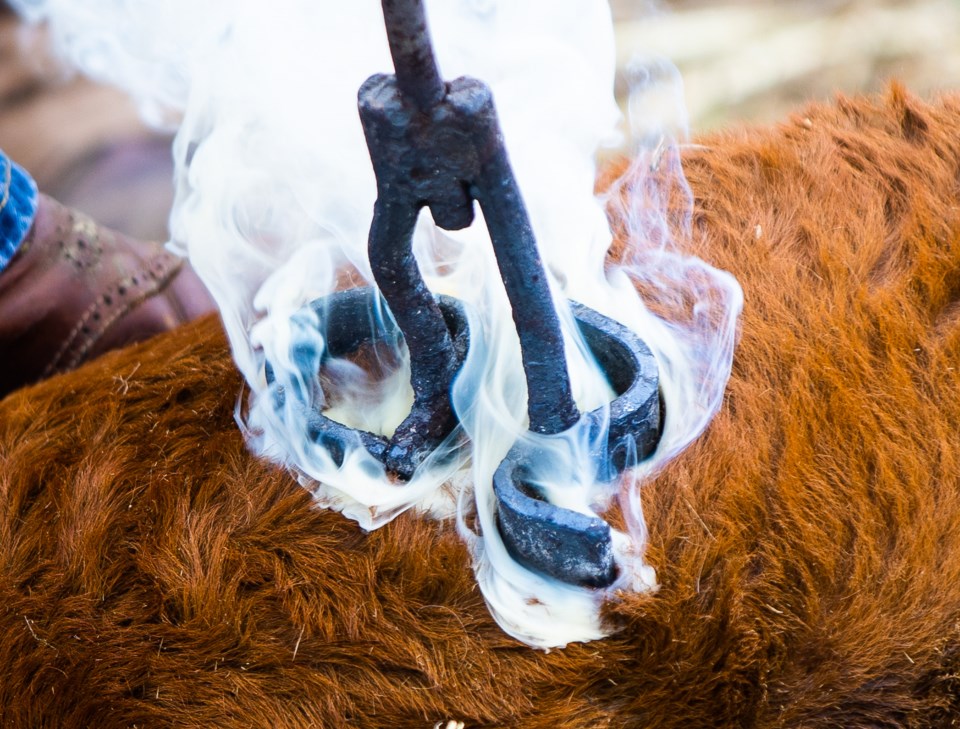 A brand is applied during a cattle branding near Black Diamond on May 22. By Brent Calver/OkotoksTODAY
A brand is applied during a cattle branding near Black Diamond on May 22. By Brent Calver/OkotoksTODAY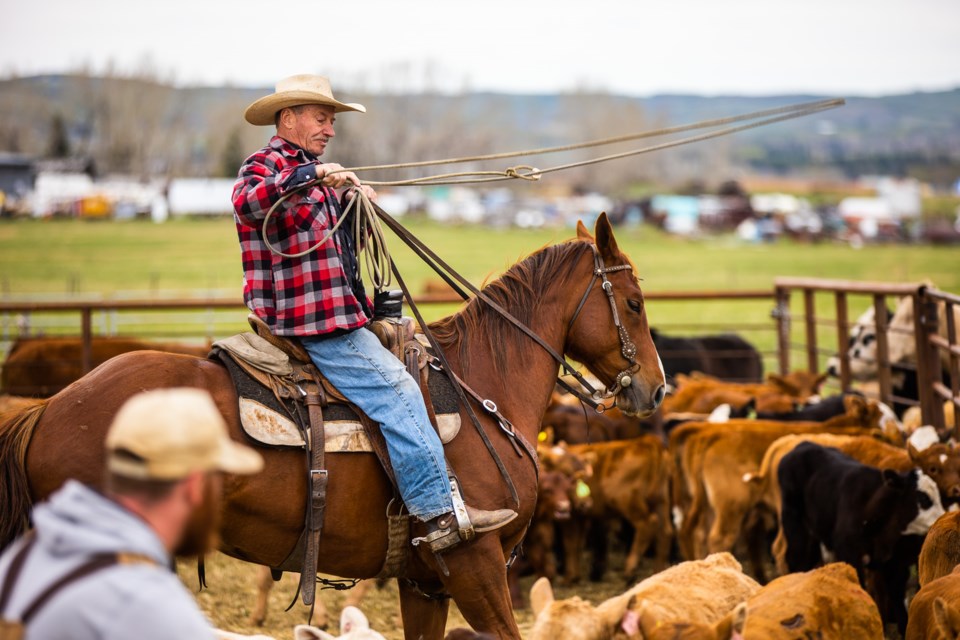 Roper Jim Kelts brings in calves during a cattle branding near Black Diamond on May 22. During branding, a generations-old tradition, friends and neighbours come through to help ranchers with the immense task of wrangling their herd's offspring for branding, castrating, and inoculations. By Brent Calver/OkotoksTODAY
Roper Jim Kelts brings in calves during a cattle branding near Black Diamond on May 22. During branding, a generations-old tradition, friends and neighbours come through to help ranchers with the immense task of wrangling their herd's offspring for branding, castrating, and inoculations. By Brent Calver/OkotoksTODAY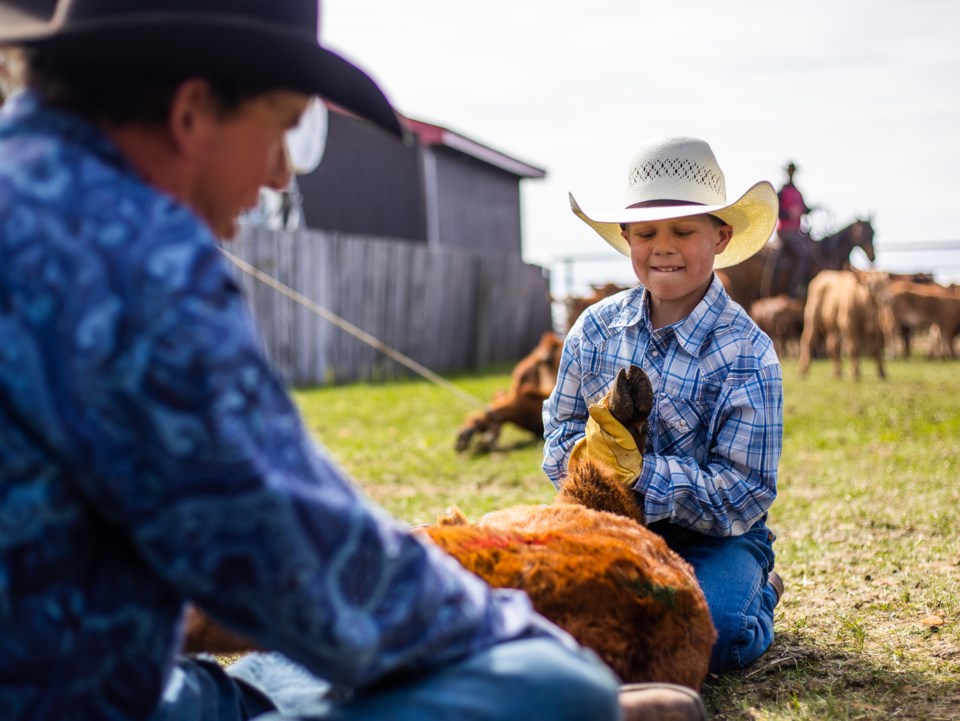 Jack Emerson holds a calf during a cattle branding near Black Diamond on May 22. As children often grow up to take on their family's livelihood, ranchers impart their knowledge and skills hands-on. By Brent Calver/OkotoksTODAY
Jack Emerson holds a calf during a cattle branding near Black Diamond on May 22. As children often grow up to take on their family's livelihood, ranchers impart their knowledge and skills hands-on. By Brent Calver/OkotoksTODAY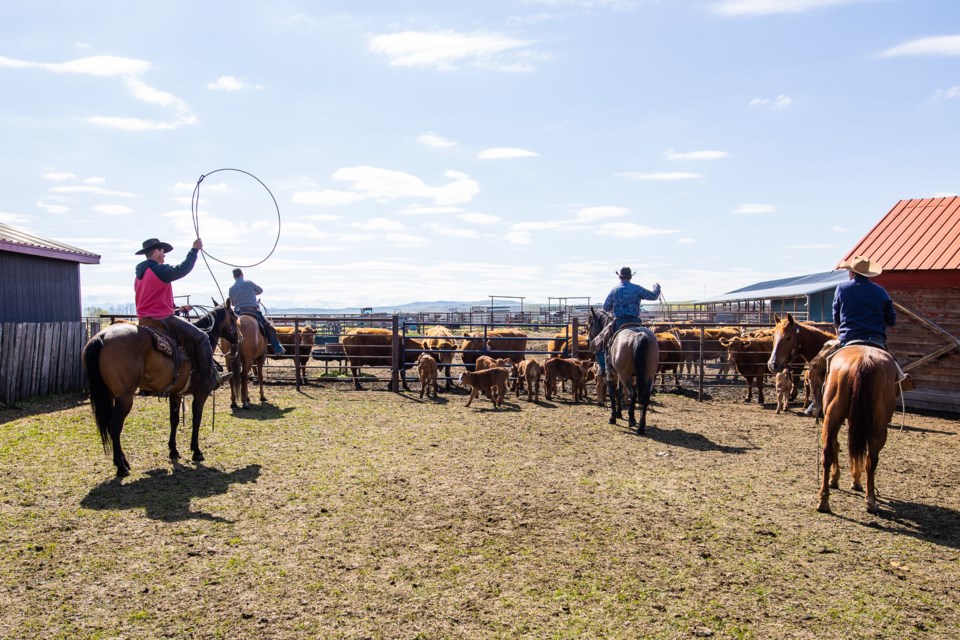 Ropers gather the calves during a cattle branding near Black Diamond on May 22. During branding, a generations-old tradition, friends and neighbours come through to help ranchers with the immense task of wrangling their herd's offspring for branding, castrating, and inoculations. By Brent Calver/OkotoksTODAY
Ropers gather the calves during a cattle branding near Black Diamond on May 22. During branding, a generations-old tradition, friends and neighbours come through to help ranchers with the immense task of wrangling their herd's offspring for branding, castrating, and inoculations. By Brent Calver/OkotoksTODAY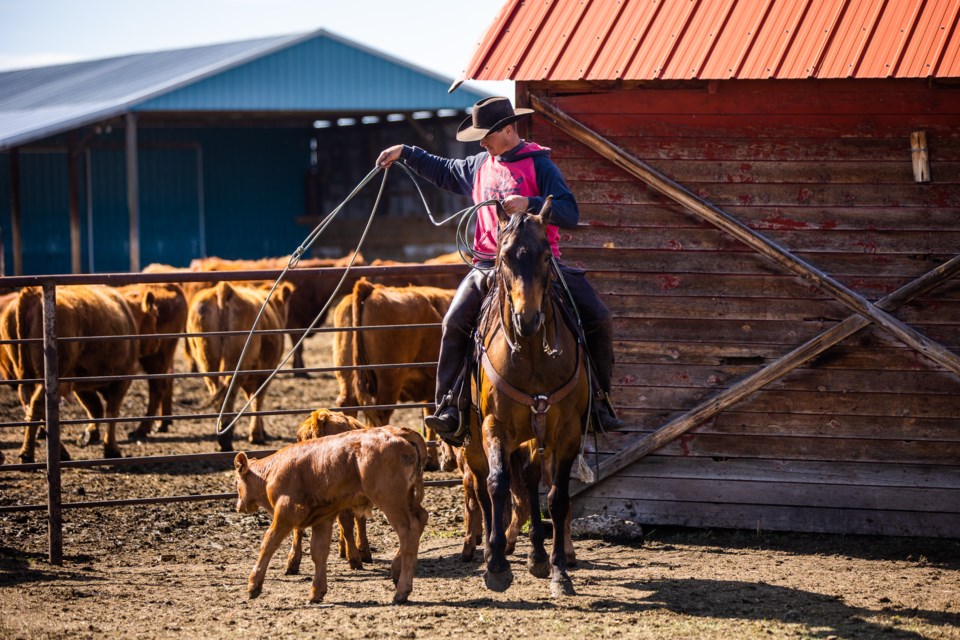 Tyler Thomson during a cattle branding for the herds of third-generation ranching brothers Gary, Bill, and John (Tyler's father) Thomson near Black Diamond on May 22. By Brent Calver/OkotoksTODAY
Tyler Thomson during a cattle branding for the herds of third-generation ranching brothers Gary, Bill, and John (Tyler's father) Thomson near Black Diamond on May 22. By Brent Calver/OkotoksTODAY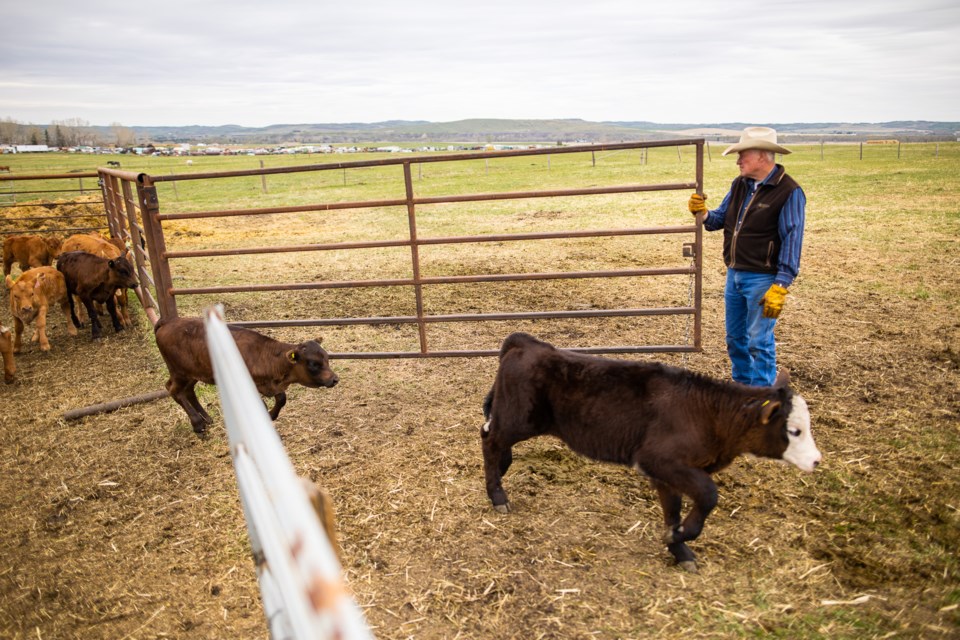 After their branding and inoculations, John Thomson lets the calves run back to their mothers. By Brent Calver/OkotoksTODAY
After their branding and inoculations, John Thomson lets the calves run back to their mothers. By Brent Calver/OkotoksTODAY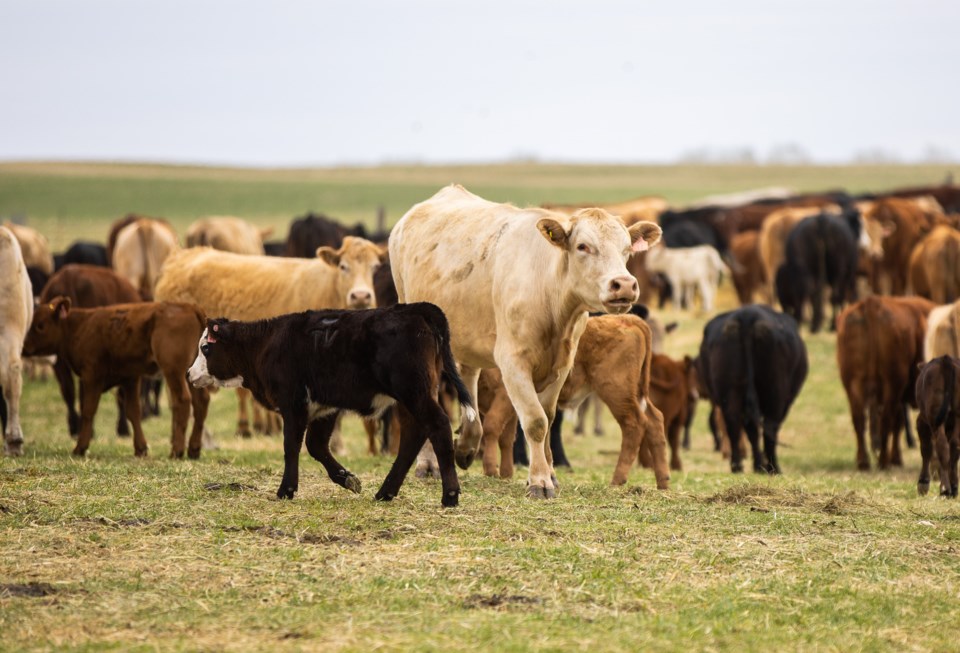 After their branding and inoculations the calves run back to their mothers during a cattle branding near Black Diamond on May 22. By Brent Calver/OkotoksTODAY
After their branding and inoculations the calves run back to their mothers during a cattle branding near Black Diamond on May 22. By Brent Calver/OkotoksTODAY
